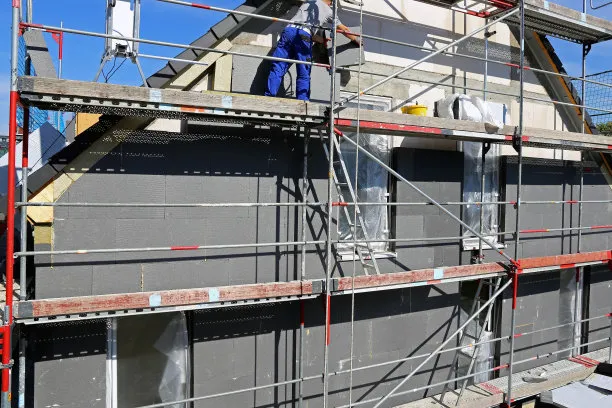
The Power of PVA and PP Fiber: Strengthening Construction and Industry
In modern construction and industrial manufacturing, choosing the right materials is key to quality and efficiency. One material making waves across sectors is polyvinyl alcohol plastic, commonly referred to as PVA. Whether you're preparing pp fiber concrete or choosing the right PVA for plastering walls, this versatile material plays an essential role. From building sites to textile plants, PVA is proving itself indispensable.

Polyvinyl Alcohol: Structure, Uses, and Versatility
Polyvinyl alcohol plastic is a synthetic, water-soluble polymer with a wide range of industrial applications. Its basic polyvinyl alcohol chemical formula is (C₂H₄O)n, where “n” represents the repeating vinyl alcohol units. This molecular structure allows PVA to dissolve in water and form a durable, flexible film, ideal for adhesives, coatings, and construction treatments.
One of the most common uses is PVA before plastering, especially in interior renovation and new builds. PVA acts as a primer that seals porous walls, prevents rapid water loss from plaster, and enhances surface adhesion. Whether you’re coating drywall or masonry, applying PVA for plastering walls is a time-tested technique that helps plaster adhere better and finish smoother.
For outdoor work, professionals often turn to exterior PVA for rendering. This specially formulated PVA type offers greater resistance to moisture and weather exposure, making it perfect for facades, garden walls, and other surfaces exposed to the elements.
In commercial supply, PVA bulk is favored for its cost-efficiency. Contractors and manufacturers often buy large quantities of PVA in powder or liquid form to prepare batches for construction sites or industrial production lines. The pva polymer price can vary depending on grade, solubility, and regional availability, but buying in bulk typically yields the best value.
Because PVA is used in multiple industries, knowing how to handle it safely is essential. For safety information, consult the MSDS of polyvinyl alcohol (Material Safety Data Sheet), which outlines storage, handling precautions, and exposure limits.

PVA Beyond Walls: Concrete, Paint, and Sponges
Beyond bonding agents and wall prep, PVA also plays a crucial role in pp fiber concrete. Polypropylene (PP) fibers combined with PVA-treated surfaces create concrete that is not only strong and impact-resistant but also crack-resistant and water-tolerant. This combination is ideal for precast structures, flooring, and load-bearing elements that demand both internal strength and exterior stability.
PVA also has aesthetic applications. In decorative and protective finishes, polyvinyl alcohol paint is used for its glossy, water-resistant properties. It is especially common in arts, specialized wall coatings, and even fabric surfaces where flexibility and sheen are required.
One unexpected but growing area of PVA application is sponge manufacturing. As a PVA sponge manufacturer will tell you, polyvinyl alcohol’s porosity and water retention make it perfect for high-absorbency sponges used in cleaning, cosmetics, and even medical procedures. These sponges are soft, non-abrasive, and extremely durable when wet.
Frequently Asked Questions (FAQs)
1. Why should I use PVA before plastering walls?
Answer: PVA before plastering acts as a sealer and bonding agent, reducing surface absorption and ensuring that the plaster adheres smoothly. It also prevents premature drying, which can lead to cracking.
2. Is exterior PVA different from regular PVA?
Answer: Yes, exterior PVA for rendering is formulated to resist moisture, UV radiation, and outdoor conditions. It provides a more durable bond for plaster or render on external walls.
3. What are the benefits of combining PVA and PP fiber in concrete?
Answer: PP fiber concrete reinforced with PVA-treated surfaces enhances crack resistance, increases structural flexibility, and offers better bonding for plaster finishes or waterproof coatings.
4. How can I find safety information about polyvinyl alcohol?
Answer: Always refer to the MSDS of polyvinyl alcohol, which includes critical data on health risks, first-aid measures, fire hazards, and safe handling procedures.
5. What factors influence the price of PVA polymer?
Answer: The PVA polymer price depends on purity, particle size, viscosity, packaging (e.g., PVA bulk), and market demand. Buying directly from manufacturers or distributors often yields better pricing.
-
Hydroxypropyl Starch as a Sustainable Construction AdditiveNewsNov.24,2025
-
The Gelation Properties of CMCNewsNov.21,2025
-
Redispersible Latex Powder and Water Retention CapacityNewsNov.21,2025
-
Dosage Control for Polycarboxylate Water ReducerNewsNov.21,2025
-
Film-Forming Properties of Polyvinyl AlcoholNewsNov.21,2025
-
The Function of Gypsum Additives in MortarNewsNov.21,2025





















